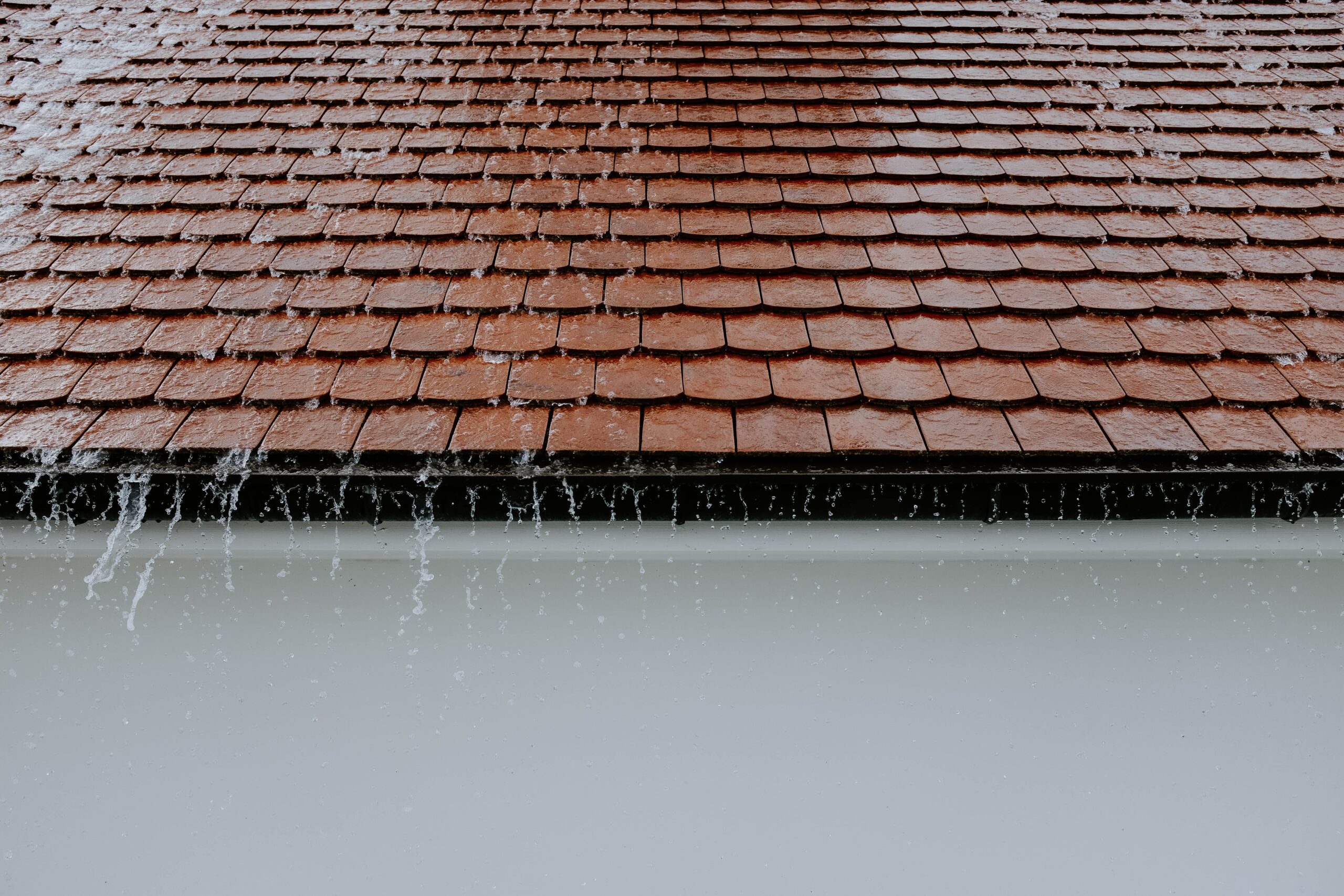There are some things in life that you may take for granted. One of them is that rain falls from the sky to the ground. Another is when the rain does fall from the sky, the roof on your house will keep you and your belongings dry.
But, what if the wind is driving the rain from the side? How does that affect your roof’s performance? And, what can you do to prevent wind-driven rain from leaking into your house?
Keep reading to find out.
Why Does Your Roof Sometimes Leak During Storms?
You can have a whole week of rainy weather, and your roof never leaks. However, in the midst of a storm with wind and rain, you look up and notice a wet spot on your ceiling. Understandably, you are concerned, but it may not be as bad as you think.
Your roof is designed so that rain runs down the roof, into the gutters, and away from your house. The shingles are offset and overlap, so there are no gaps for the water to work its way underneath. Between the pitch of the roof and the placement of the shingles, gravity does its work, and your roof remains free of leaks.
Unfortunately, rain does not always fall straight down. Sometimes, it goes sideways. This is referred to as wind-driven rain.
What is Wind Driven Rain?
As the name implies, the wind is driving the direction of the rain, usually horizontally. And, the stronger the wind, the greater the force of rain hitting your house. When the rain comes sideways with power, it can make its way under your shingles and into your house. The layer of tar paper under the shingles is an added layer of protection. But, over time, the tar paper can start to deteriorate, and the water makes it underneath that as well. That is when you notice the leak. Wind-driven rain can affect any type of roofing material, whether it is asphalt shingles, ceramic or slate tiles, or cedar shake shingles. It can even affect new roofs.
How to Keep Your Roof Protected During Wind Driven Rain
The best way to keep your roof protected from wind-driven rain is preventative maintenance. Your roof should have a layer of tar paper or felt underlayment between the decking and the shingles.
An ice and water barrier is another good defence against wind and rain. This barrier is about 1 metre wide. It has a “peel and sticks” backing, and you place it all along the roof’s edge. It should also go along the valleys in your roof, around your chimney, and any vents coming out of your roof. After adhering to the barrier, the roofer can then nail the shingles over it. The membrane will create a seal around the roofing nails and prevent water from leaking onto the roof decking.
Inspect your roof for worn or missing shingles and replace them. Check the edges of the roof where the shingles might start to lift or curl.
Where is the Leak Coming From?
Leaking roofs are a costly headache for homeowners. What makes leaks from wind-driven rain so frustrating is that it is sometimes difficult to know the leak’s location since it is coming from different directions. You may need a professional roofer to assess the roof’s weak spots.
Here are some locations where roof leaks are commonly located:
Chimney
Chimneys made of brick or cement blocks can develop cracks as time goes by. Wind and rain can cause more damage, especially if freezing weather soon follows, expanding the cracks even more. Another area of concern around the chimney is the flashing. Over time, it can develop holes and leaks, allowing water to seep underneath. Flashing around roof vents should also be checked.
Roof Valleys
The roof valley is where the roof slopes meet. Rainwater will come down the slopes, meet in the valley, and make its way to the gutter. If the valleys are not correctly installed or sealed, they can cause substantial leaks.
Missing or worn shingles
You have probably noticed asphalt granules in your gutter or near your downspout. The loose granules are just part of the natural ageing process of shingles. However, at some point, they are no longer protecting your roof, and the shingles are more likely to break off in high winds or lift up for rain to make their way underneath the shingles, onto your roof decking, and into your house.
Will Insurance Cover the Cost of Repairing the Roof?
A typical homeowner’s policy will cover damage to your roof caused by wind-driven rain. However, they might not cover damage if they find that it was preventable. Insurance also will not cover water damage from roofs that show signs of ageing. So, it is essential to inspect your roof and gutters and make repairs before a storm.
We Can Help
Wind-driven rain can cause leaks in your roof and possibly damage your ceiling, walls, and belongings. You will want to repair any damage as soon as possible. Roof leaks left unattended can cause your wood to rot and allow mould and mildew to develop. Putting off roof repairs will cost you more money in the long run.
If your roof is leaking, the experts at Roofing Costs can help. We have access to an extensive network of professional roofers and are trusted by homeowners throughout the UK. Contact us with your address and project, and we will connect you to roofers in your area at no cost and no obligation to you. We can find you professionals for on roof replacement or re-felting your current roof.

